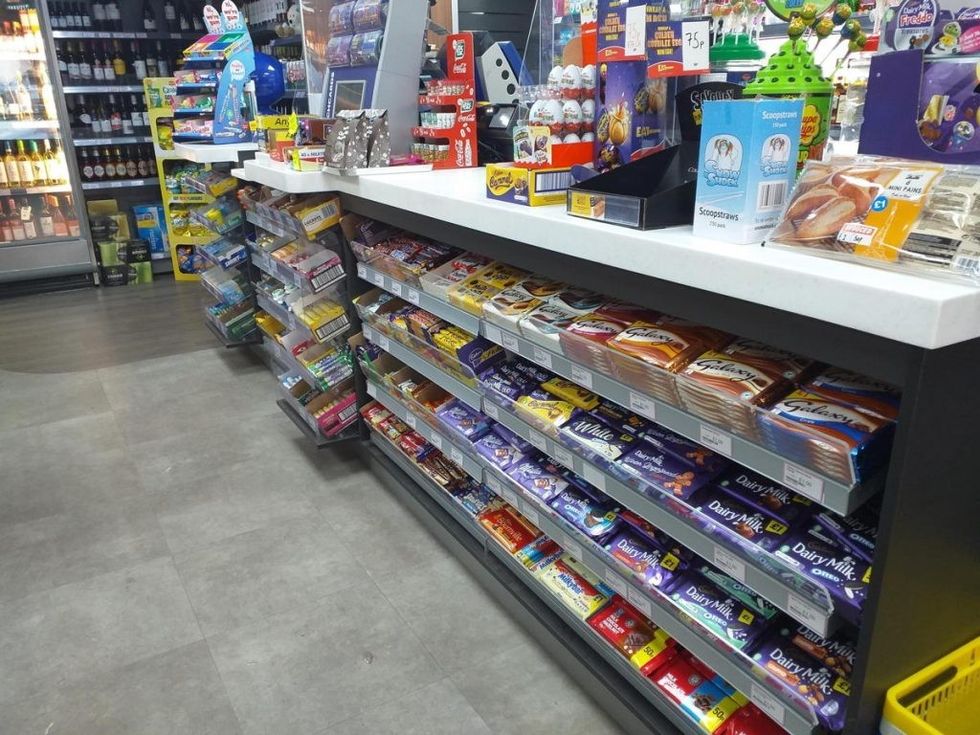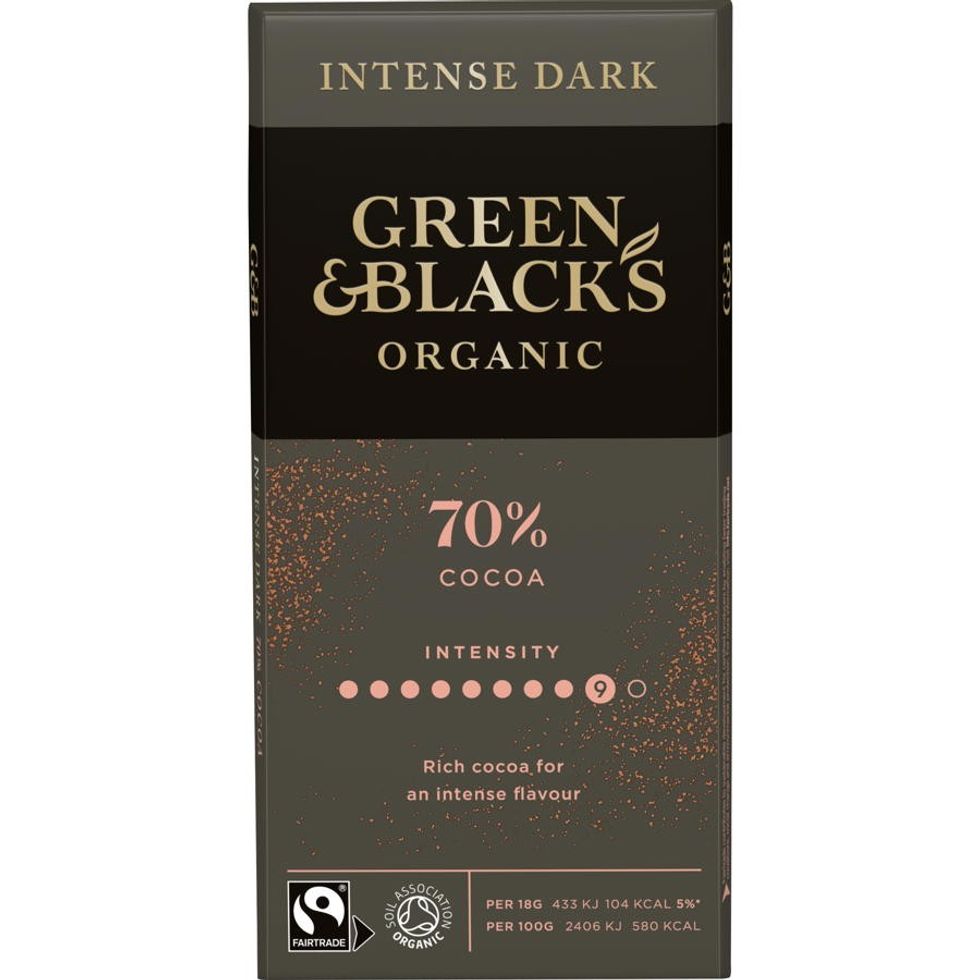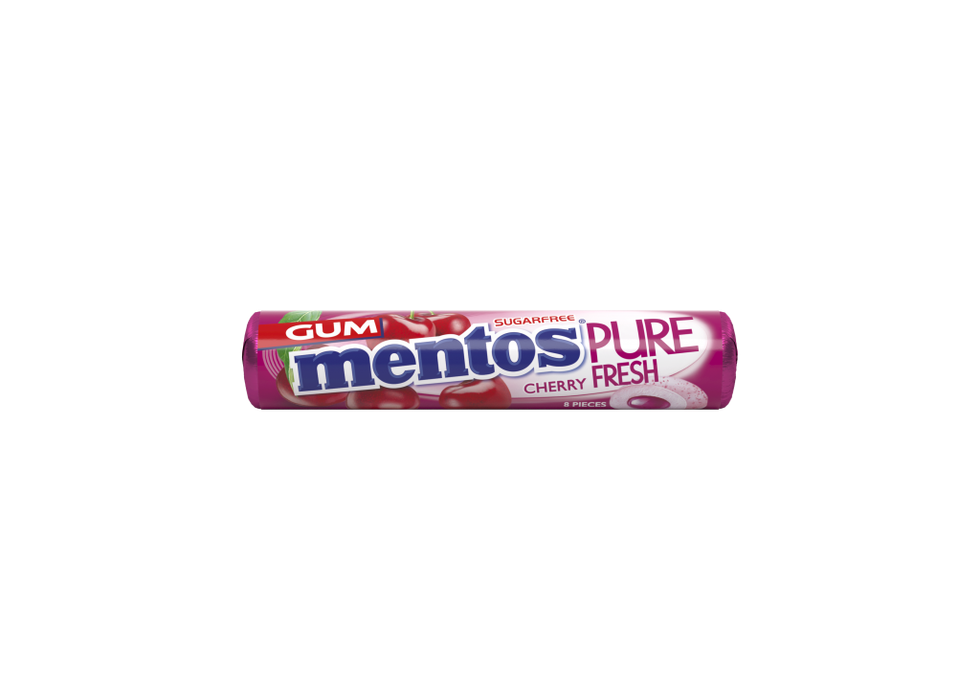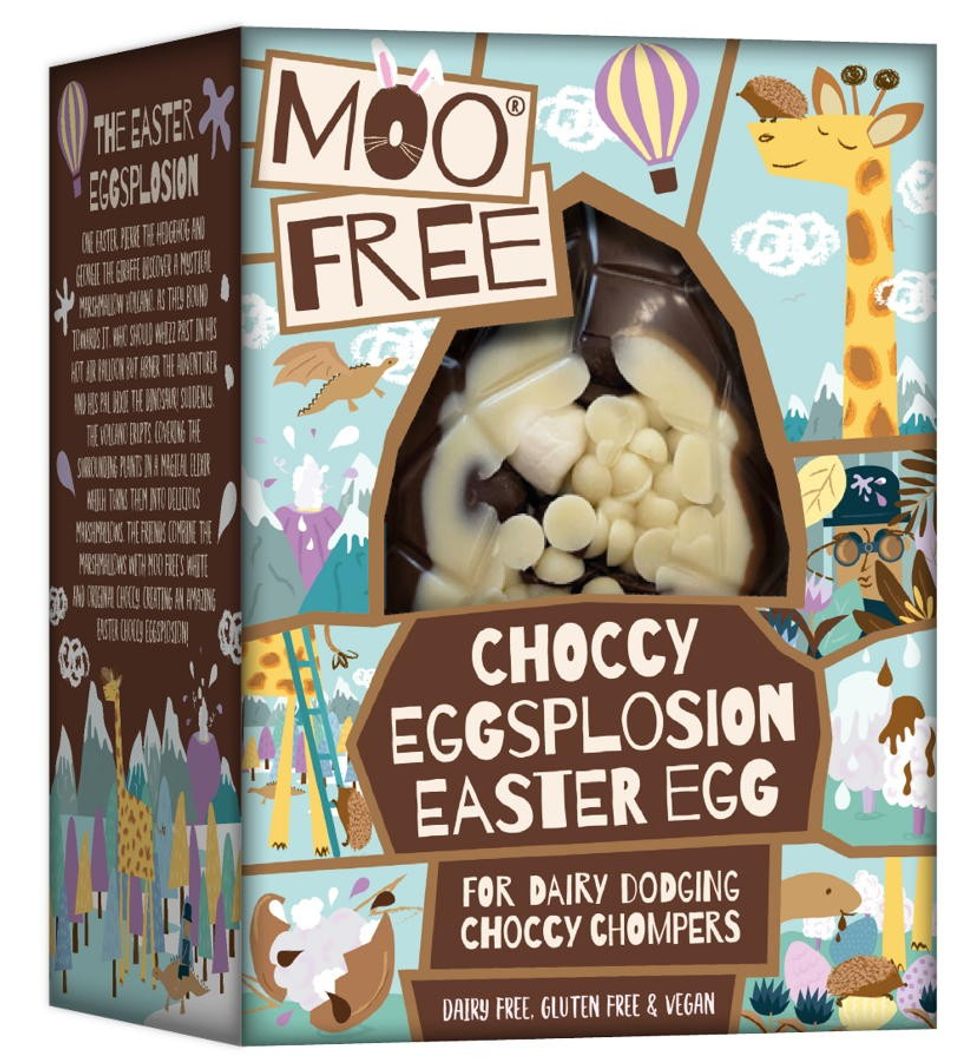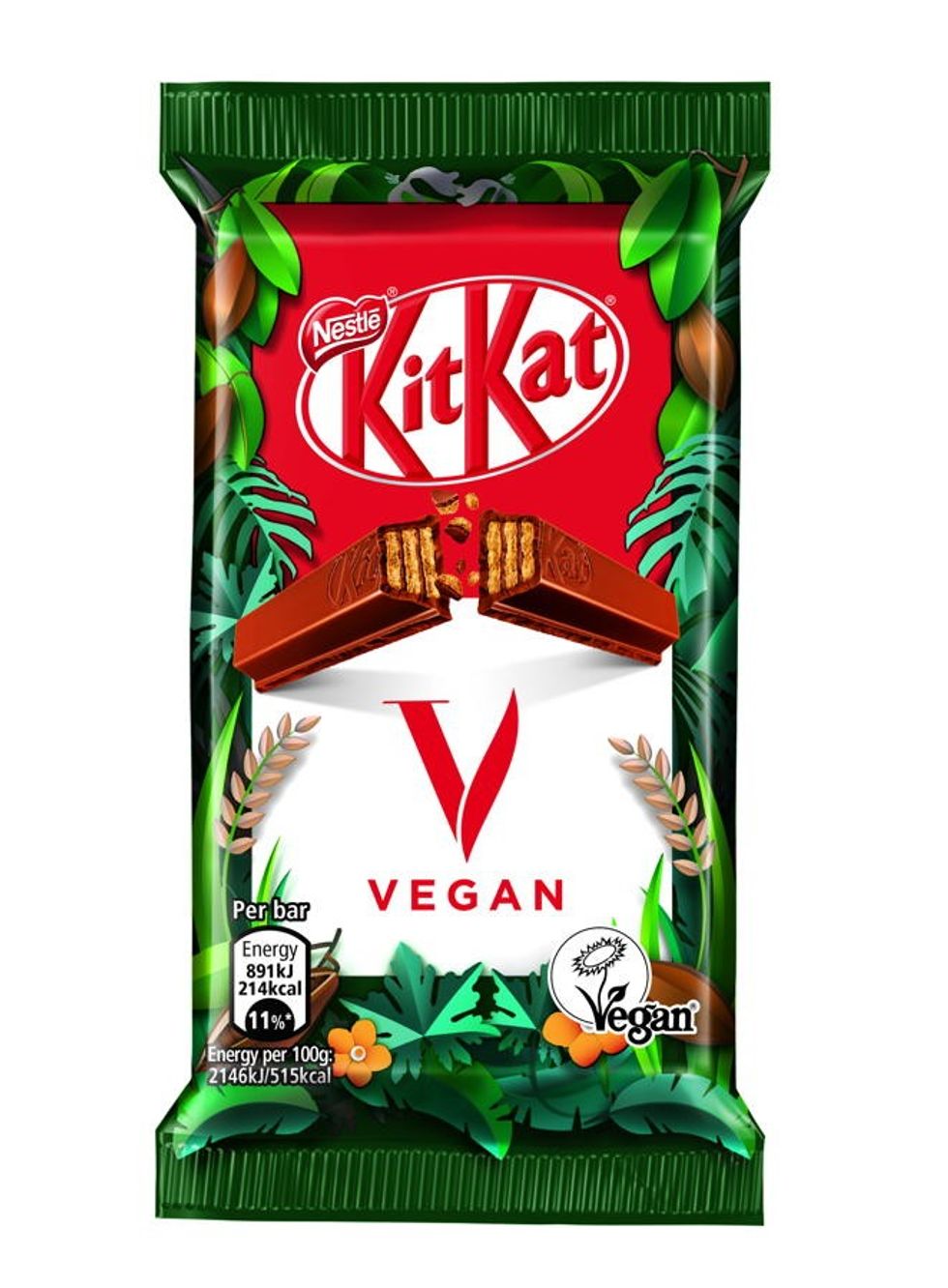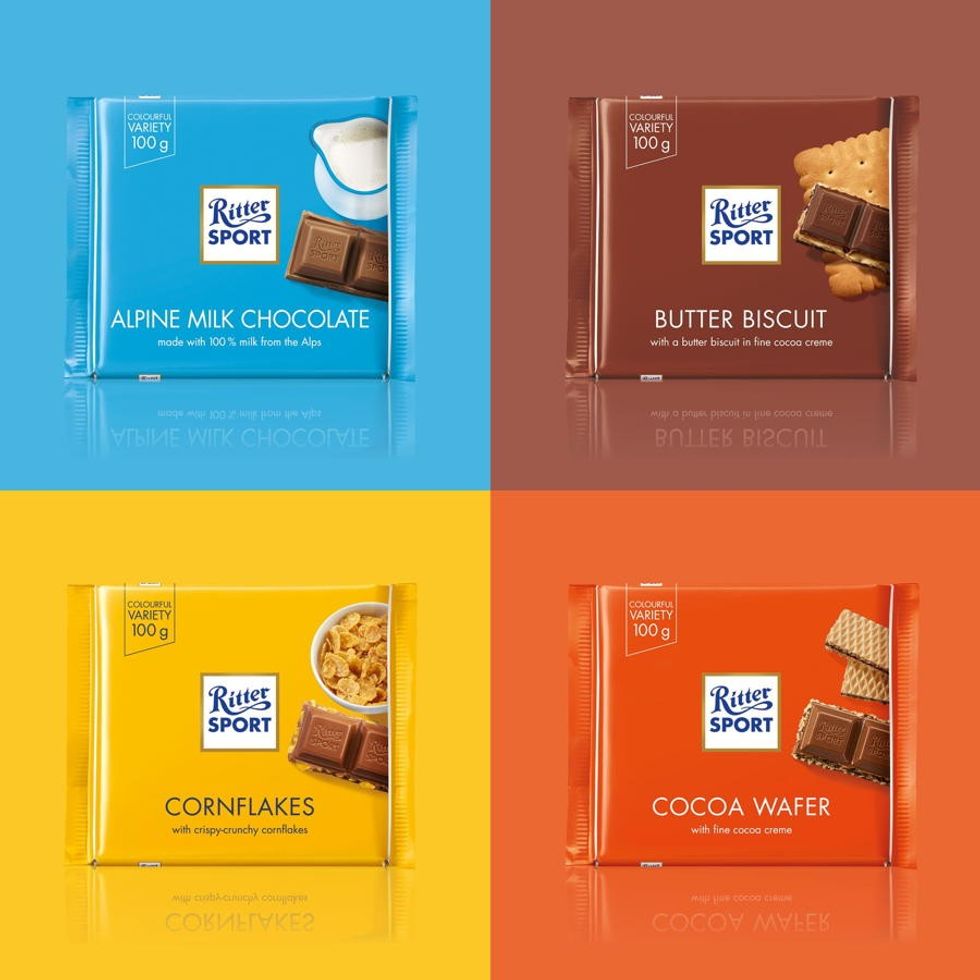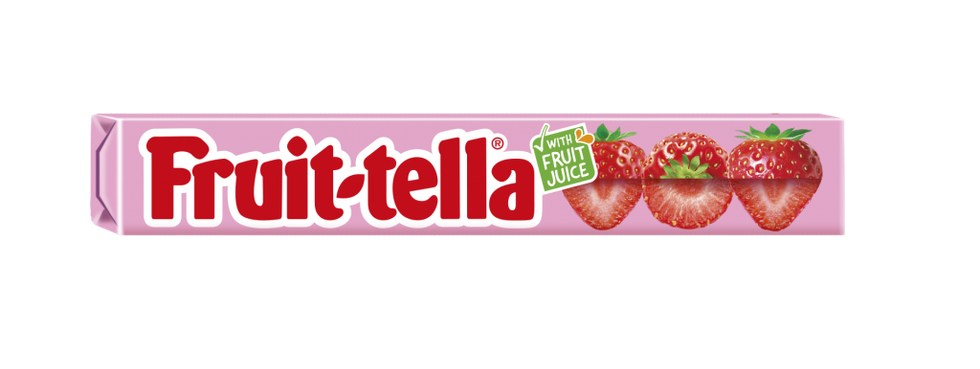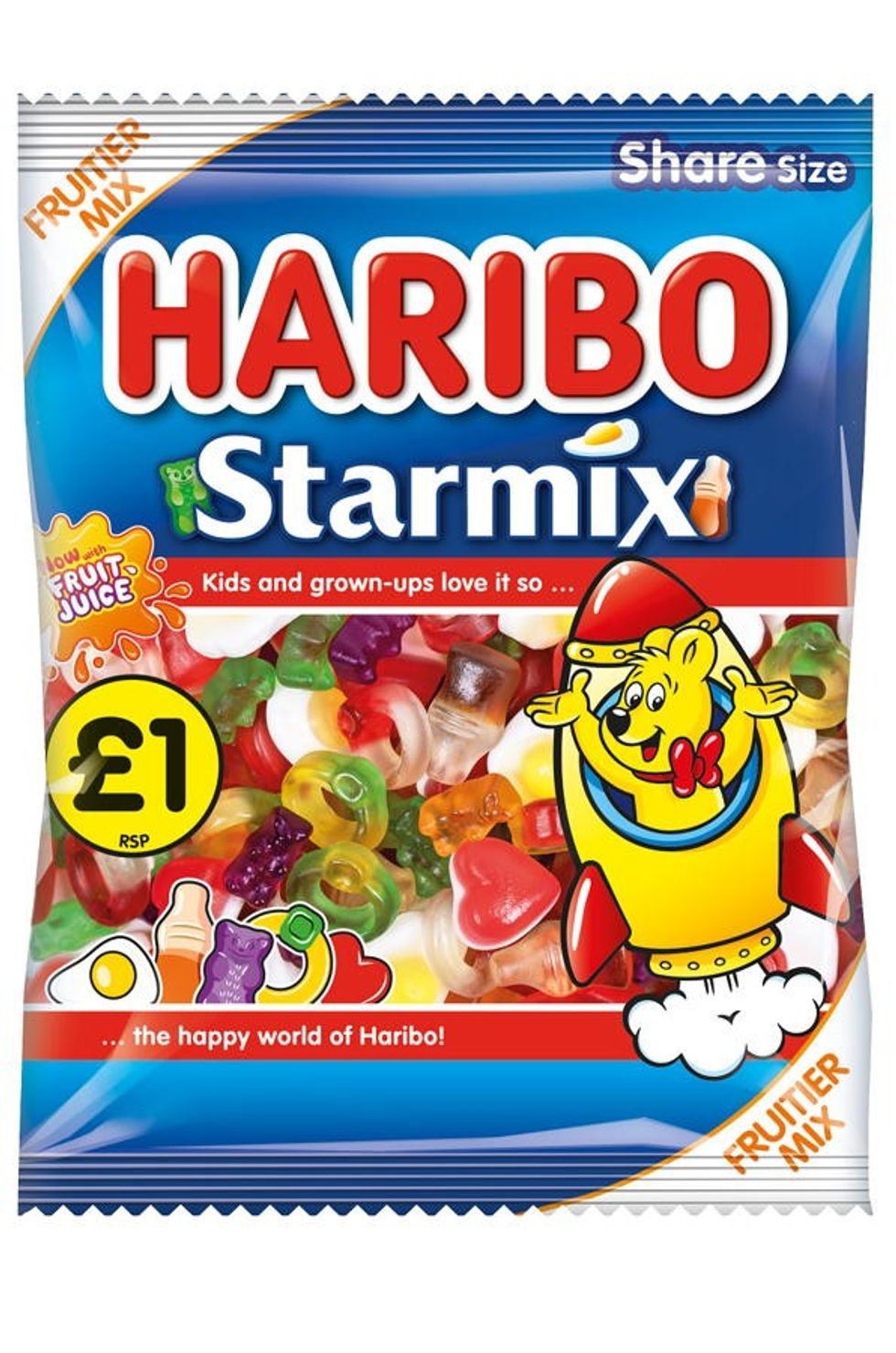Chocolate, and confectionery in general, are the ultimate and premier go-to comfort treat, so in a time of hardship and uncertainty, such as the nation has experienced for the last (almost exactly) 12 months, you wouldn’t be surprised to see the category doing well – and so it has, especially in independents. As Mark Roberts, Trade Marketing Manager at Perfetti Van Melle puts it: “At the heart of the impulse occasion, confectionery remains in the top purchases within the independent channel.”
Within that market, however, there are differences. For example, mints and gum – the on-the go and face-to-face social fresheners, the commutertime-killers, the liven-you-up-at-the-desk taste poppers – took an initial hit with the lockdown, as would be expected.
“Snacking and lunchtime purchases have seen a decline with consumers not being as mobile with working from home and schools being closed,” explains Bestway Wholesale’s Trading Director, Kenton Burchell. “And whilst single-serve confectionery sales may be down, conversely, larger pack sizes and multi-packs are up. Consumers are also looking for healthier options, but when they do want a treat they are trading up for self-treats for that pick-me-up moment.”
On the whole a rising tide floats all boats, and the need for sweetness and treats, with pubs, restaurants, cinemas and everything else shut indefinitely, meant that chocs and sweets have done nicely under the pandemic.
And demand can be what economists term “inversely elastic”. Normally demand goes down as price goes up, but in times of economic hardship when purchases are swapped from big-ticket items to more modest ones, there can be a boost for affordable treats and luxuries as spending power declines. Yes, it’s the “lipstick effect” – treating yourself to something small like fine chocolate because the Cayman Islands are out of the question this year.

“The lipstick effect is certainly true,” says Paul Hargreaves, CEO of fine foods distributor Cotswold Fayre. “When times are bad, consumers seek out small luxuries, and speciality food falls into this category. As a result of the Covid-19 pandemic, this has been true, and we’ve seen a real uplift in terms of our ‘treat’ sales.”
The confectionery category has been a beneficiary of this, and premiumisation has been in evidence, along with a nostalgia for well-loved brands, and a need for names that are reassuring and trusted.
But along with that has gone a fair amount of innovation and NPD as pandemic-related trends – such as health – led to new scope for lower sugar and vegan or gluten-free alternatives. So we are seeing a lot of well-known long-time bars and sweets dressing up in hip new clothes to satisfy a very robust but nuanced demand from consumers. People are also becoming more interested in where the chocolate comes from and how workers are treated – and are willing to pay more for ethical products.
Social factors, such as being confined to the home, have meant that formats have adapted – a decline in running around during the day has made single serve dip a bit, while the increased family sharing occasions in the evening have led to bigger formats and bulkier buys – but still often premiumised ones. Economic uncertainty and hardship have also meant that this year is turning into the New Age of PMPs.
Burchell reveals that the total Confectionery market finished +1.4 per cent in 2020 and Independent and Symbol stores finished ahead of this at +3.5 per cent, “which is a phenomenal result”.

He says that a lot of this change was driven by shoppers supporting local stores for both top-up and main shop mission: “The increased shoppers also brought a change in demographic in Convenience with more affluent shoppers and younger shoppers. To engage these shoppers in 2021 stocking the latest new products, more premium products and having a better for you range with vegan and healthier will keep them visiting your stores.”
The 2021 roadmap for the category, as life begins to resume normality, can be expected to play out something like this, he says: “Q1 lockdown continuing with impacts across the market; Q2 critical time for businesses as lockdown ends; Q3 normality will start to return with more on-the-go purchasing; Q4 – starting to live with the virus following full UK vaccinations.”
We can expect something of a reversion to the norm sales-wise after the pandemic restrictions begin to be eased in April, and people return to the office. The key – as with the increased football and bigger basket for Convenience this past year – is to retain what has been gained.
That little bit extra
At its simplest, premiumisation is paying more for less because you are getting better quality – however you define it. But it has a lot to do with brand, ingredients, and “story”. With products such as boxed chocs, long-lost favourites such as Rum and Raisin chocolate being resurrected with wild success, and more expensive but morally “clean” chocolate (such as Tony’s Chocolonely) being purchased more often, premiumisation can be seen to co-exist with consumers who in other respects are economizing by buying larger formats and PMPs – it is always up and down at the same in the market-place.
“Confectionery is one of the few categories where shoppers are willing to spend money on the products that they love, in order to treat themselves and loved ones,” says Ferrero’s Customer Development Director, Levi Boorer. “While the recent lockdown has added a degree of uncertainty to how people might celebrate, shoppers will still be looking for high-quality products to gift loved ones or to treat their households.We know people turn to the brands they know and love during times of uncertainty.”
Susan Nash, Trade Communications Manager at Mondelēz International, agrees: “In uncertain times consumers look for reassurance and brands they know and love. Consumers can trust in category-leading brands such as the nation’s favourite chocolate , Cadbury and Maynards Bassetts, one of the UK’s favourite confectionery brands since 1842, to deliver on familiarity and taste.”
In case Valentine’s Day, with its incredible sales figures for boxed chocolates, had not already made it plain, Boorer adds that “Our portfolio of premium, established brands – Ferrero Rocher, Ferrero Collection, Raffaello, and Thorntons – offers consumers high quality treats or gifts, which we know are in demand and suit the growth of the ‘big night in’ occasions too.” He is convinced that the growth of the chocolate category is helped by consistent delivery of premium products, and researchers Mintel confirm it, saying that data suggests “consumers may be investing in slightly more premium chocolate products as brands increasingly expand their offer.”
“There has been a change in consumer behaviour observed during Covid19, to trade-up across certain categories and this is expected to continue as consumers are choosing to eat quality confectionery, but less often,” adds Bestway’s Burchell.
“Premium Boxed Confectionery will continue to play an important role in driving confectionery sales, so it’s important that the right pack formats are offered to suit their shopper’s mission and baskets size,” says Boorer. “For example, Ferrero Rocher 300g and Thorntons Classic 262g are ideal offerings that make it easier for Shoppers to switch to these Premium Brands that will help drive bigger basket sales for retailers.”
Producers are responding by polishing their upmarket offers.
“Green & Black’s, the premium chocolate brand, has announced a packaging refresh across its Organic tablets range that will capture the attention of shoppers looking to trade up within the category,” says Nash. The brand’s new visual identity, which started appearing on shelves inFebruary, reinforces the commitment to ethically sourced cocoa, and high quality chocolate. “By celebrating these core attributes of the Green & Black’s brand, the new design marks a return to its roots, with a nod to its heritage and values,” she says, and the packaging refresh for five Green & Black’s Dark bars (70 per cent Dark, 85 per cent Dark, Ginger, Maya Gold, and Hazelnut & Currant), indicating a concern with ingredients and ethics, will be registered with The Vegan Society.
As with Green & Black’s offer, a lot of the premium preferences of consumers are in the NPD area around health trends and ethical manufacturing, so it’s good to think about premiumisation and look for margins in terms of both luxury and also lifestyle.
One brand that exemplifies the premium element and is now rapidly growing its presence is Ritter.
“Consumers care more and more about the food they eat, how it is made, what it contains and the impact it has on the planet and the value chain, this is why we are winning,” explains Katy Clark, Head of Marketing Ritter Sport UK & IRE.
Premium ingredients and provenance are the key to selling products as worth the extra expense.“Ritter Sport is made using 100 per cent certified sustainably sourced cocoa, 100 per cent natural ingredients, 100 per cent cocoa butter (never substituted for palm oil in our chocolate masses),” she says.
Ritter Sport became the first major chocolate bar manufacturer in 2018 to exclusively source 100 per cent Certified, Sustainably Sourced Cocoa across its entire range. “This is further supported by the addition of the Rainforest Alliance logo on pack. We also only 100 per cent natural ingredients and 100 per cent cocoa butter,” adds Clark.
She does say, however, that it is important to remember that chocolate is still primarily purchased to indulge and cheer people up,“So it’s essential that brands deliver on the above without losing the fun of confectionery.”
Innovation and taste, trends
One of the most noticeable trends in chocolate is that it is turning darker, and Susan Nash thinks that its popularity is partially down to an ageing demographic (and remember that older people tend to shop in convenience more generally).
“As we mature, our taste preferences change and many older consumers prefer the higher cocoa hit of dark chocolate brands such as Darkmilk, which offers consumers the best of both worlds with the richest, creamiest bar Cadbury has ever made,” she says, adding that despite a challenging year for the category, Cadbury has seen incredible growth for Darkmilk.
“This success stems from a deep understanding of our shoppers, as we know that although not all consumers grow to love the stronger flavour profile of dark chocolate, many still appreciate a richer tasting chocolate as their taste buds mature.”
As well as this, Nash advises that retailers should ensure their range includes both single bars and multipacks from the leading brands to suit the needs of these consumers who are buying confectionery on smaller trips or as part of their weekly shop.
PVM’s Mark Roberts agrees that choices are based on taste and that flavour is key when it comes to refreshment. “It’s a particularly strong USP for Mentos Pure Fresh Gum, which is shaking up the category by offering more than the traditional spearmint and peppermint flavours. Fruit flavours are new and unconventional; they introduce alternative occasions and attract teenage and young adult shoppers by providing that point of difference and indulgence elements to refreshment.”
Mints are going multi-coloured, so to speak, with many more flavour combinations to bridge the gap between sweets and mints.
“We’re continuing to innovate with Mentos Pure Fresh fruit flavours, as well as our Xtra Strong mint flavour,” he says, “now available in a roll and multipack, and a new format for us: the first sugar-free chewy mint in a peppermint flavour.”
And he also points out the health and ingredients angle, reminding us that the vegan market is expected to soar to £1.1bn by 2023, and that Veganuary this year welcomed its one millionth participant. “We know the appetite for alternatives is not going anywhere, especially since over 650 new products were launched during Veganuary.”
Today’s consumers look for more choice to choose a treat that is right for themselves, friends and their family,” says HARIBO Trade Marketing Manager Claire James. “In addition to top-selling ranges, an important consideration should be given to low sugar, vegetarian and portion-controlled options.
Free-from and plant-based
For the same reason that almost all chicken is halal (and lemonade kosher), might not much confectionery soon be vegan by default, simply because it means nobody is denied from indulging in it? You don’t need to be vegan to eat free-from, after all, but it doesn’t work the other way around with milk chocolate.
And vegan products are no longer health-shop skus – as Roberts says, those with specific dietary requirements are often seeking familiar treats and snacks, and nowthey can find trusted brands such as Fruittella playing in the vegan space, with PVM’s Gelatine Free range now worth £1.4m alone.
Andrea Jessop, CEO of vegan chocolatier Moo Free, explains that free-from chocolate is growing in popularity precisely because it doesn’t just cater for vegansor those with allergies, but also for people who follow a more plant-based diet in general.
Moo Free, whose average annual growth is 30 per cent, has spent the last ten years perfecting their free from ‘milk’ and ‘white’ chocolate recipes, so they taste of high-quality chocolate. Their ‘white’ chocolate launched last year and is already highly popular. This is reflected in their sales of the Mini Bar White Chocolate, which has grown 100 per cent in the last three months on their online shop.
Already highly visible is Moo Free’s Choccy Eggplosion Easter Egg, which is available to independents this Easter, made using its milk-free “milk” chocolate and splashings of “white” chocolate, with vegan marshmallows and choc drops.
NPD and ethics FTW
Sour flavours are also all the rage, and Roberts says it is the combination of sweet and sour flavours that keeps consumers chasing the sensation – “The market is currently worth £50m with growth of +21 per cent in the last two years and there is a big opportunity to drive this further. We innovated within the sour sphere last year with the release of Chupa Chups Sour Infernals.”
Sour jellies are the fastest growing segment within jelly sweets, growing at 11.9 per cent, says Susan Nash. “The Maynards Bassetts Soft Jellies range is currently worth £4.7m. The brand also launched new Soft Jellies Fizzy Fish in 2019 – the first sour product in the range - to help retailers tap into the popularity of sour sweets.”
With NPD in general there is also a trend towards healthier eating and Kantar data confirms that this includes a huge move towards sugar-free sweets, with 92 per cent of consumers actively trying to reduce the sugar in the food they buy.
Meanwhile, innovation within established lines proves that the old can be new, with Chocolate Block the fastest growing sharing product at +13 per cent and +19m, according to Nielsen.
“To meet growing demand for vegan-friendly treats and to coincide with the start of Veganuary we recently announced our accidentally vegan bar range which includes our top-selling Marzipan bar which is currently the UK’s #1 vegan chocolate bar by unit sales,” says Ritter’s Clark, underlining the point.
Nestlé has been busy innovating, and recently announced the launch of a new variant under its venerable Aero range: Dark & Milk, updating and taking advantage of those “maturing” tastebuds of consumers who have loved the brand all the way back to childhood in the 1960s (the brand actually dates from the 1930s and Peppermint Aero arrived in 1959!).
“Aero Dark and Milk has a higher percentage of cocoa solids than standard Aero chocolate, which makes it ideal for those who are looking for a more intense, grown up flavour,” commented Hannah Smithson, Brand Manager for Aero. “At the same time, it retains the creamy taste elements you would find in milk chocolate, which means there is no bitterness,” Aero Dark & Milk is available in a 90g sharing bar, RRP £1.00.
Nestlé has also updated its KitKat for the vegan age, and it will be in the shops later this year – one to watch out for. KitKat has claimed an important place in the innovation area, not least for its experimental and limited-edition bars (the ruby cocoa KitKats were forever almost unobtainable, such was their popularity, and green tea matcha KitKat was, many said, to die for).
“We have seen an incredible response to our vegan-friendly Fruit Pastilles since their launch last year, so we know how much people want to enjoy alternative versions of their favourite treats,” said Alex Gonnella, marketing director for Nestlé Confectionery.
“The most common request we see on social media is for a vegan KitKat, so we’re delighted to be able to make that wish come true. I can’t wait for more people to try it; we think it tastes amazing!”
The KitKat V, as it is called, checks the ethical and ecological boxes as well, containing 100 per cent sustainable cocoa, sourced through the Nestlé Cocoa Plan in conjunction with the Rainforest Alliance.
Perhaps the biggest opportunity here is the one explained by Burchell: during the pandemic the demographic profile of convenience shoppers has skewed younger as people shopped closer to home in general. The young adore the novelty NPD, which suits what the producers are interested in supplying – and theimpulse character of the channel itself.New, younger customers can now find a great place of taste experimentation at local stores.
“[The pandemic] brought a change, with younger shoppers and more ABC1 shoppers and therefore stocking NPD is key to excite these new shoppers and maintain loyalty and turn lifeline shoppers into lifelong shoppers!” Burchell says, and that means being alert to taste crazes.
“It’s […] important to remember consumers look for excitement from a category like confectionery,” adds Susan Nash, “so new bars like Cadbury Wispa Gold Duo will help tap into this, while the return of Cadbury Twirl Orange helped drive shopper excitement once more.”
“With these younger consumers, we have seen a trend in confectionery with shoppers buying into different flavours like orange,” says Burchell.“Orange chocolate is growing well ahead of the category at +32 per cent (Nielsen: 31.10.2021). In terms of premium and healthy – 88 per cent shoppers are looking to eat healthier so retailers can consider clearly displaying ‘better for you’ sections to attract and engage more custom.
Cotswold Fayre specialises in ethical products (it’s a B-Corp – a hard-won definition of an ethical business which in itself is growing rapidly in popularity). CEO Paul Hargreaves gives some examples of the ethical brands that consumers are now hunting – and are willing to pay extra for, too.
These are brands such as Divine, which works fairly with farmers and has been doing so for some time; newer brands such as Doisy & Dam which Hargreaves says, “demonstrates accountability at every stage of its supply chain, from bean to bar”; and the now ubiquitous and expensive (but delicious) Tony’s Chocolonely. Hargreaves explains the name, saying that, “‘Tony’s Chocolonely’ illustrates Tony’s lonely fight against inequality in the chocolate industry.”
Andrea Jessop, CEO of vegan chocolatier Moo Free explains that free-from chocolate is growing in popularity as it doesn’t just cater for those with allergies, but also for people who follow a more plant-based diet or are vegan.
Moo Free, whose average annual growth is 30 per cent, has spent the last ten years perfecting their free from ‘milk’ and ‘white’ chocolate recipes, so they taste of high-quality chocolate. Their ‘white’ chocolate launched last year and is already a best seller thanks to its delicious flavour and texture. This is reflected in their sales of the Mini Bar White Chocolate, which has grown 100 per cent in the last three months on their online shop. As a result, Moo Free will be manufacturing more white chocolate, which is made from UTZ/Rainforest Alliance cocoa, in 2021.
Format fun and PMPs
Everybody has noticed that sharing packs and larger formats in general (along with more bulk buying) have gone big with lockdown – perhaps signalling a secular or permanent change. Also, producers have all apparently decided that PMPs are a great way of establishing trust with anxious consumers, the art being to retain a decent margin both for the suppliers and the retailers.
“Whilst Covid-19 hit the on-the-go and high-value seasonal items across confectionery, this was offset by an uplift in at-home snacking driven by multipacks and larger sharing formats as people turned to treats for comforts and ‘big’ nights in became the norm,” says Katy Clark at Ritter.
“In 2021 we believe that there will be more of a spotlight on value due to the decline in financial confidence due to Covid19,” predicts Bestway’s Burchell. “An increasing focus on saving money means larger value packs will be important. In 2020 the nation was caught out with Covid19 but since then businesses and shoppers have changed behaviours and will still want to celebrate special occasions.”
There is much more Big Night In to look forward to even after lockdown is over (especially considering that maybe half the UK’s hospitality venues will have been eroded). That indicates the buying-in of treat supplies in a big way.
“Of course, we’ve also seen growth of local shopping which means that products that used to be bought in supermarkets, like larger sharing bags, are now being bought closer to home from convenience retailers,” says Paul Hargreaves.
Claire James also says that key trends within the market relate to formats: “In the last 12 months, the market has shown growth of sharing bags, which is the largest pack format,” she says. “Furthermore, a decline in the purchase of single eat and tuck shop sweets have been reported: with the number one and number two sharing bags, Tangfastics and Starmix, HARIBO's medium bags continue to perform well and this is a trend that we expect to see progress in 2021.”
Roberts at PVM concurs, saying that, “Within traditional confectionery, sharing has continued to grow in the market. Our Fruittella sharing bags are growing 6.1 per cent, driven by our core range of Juicy Chew and Duo Stix bags, and our Chupa Chups Mini Lollipop bag, the second best-selling lollipop bags on the market, are growing 13.5 per cent YOY.”
He believes this increase is likely due to individually wrapped and portionable sizes, two purchase drivers that grew exponentially last year. “People seeking new ways to enjoy their evenings indoors, especially during key seasonal times like Easter or Halloween, are likely to look to their favourite treats or snacks to deliver those familiar comforts at home.”
Burchell says that Chocolate Single Bars are still the largest Confectionery category in Independent and Symbol stores, so focussing on stocking the bestselling ranges is important. “With sharing increasing in 2020,block chocolate grew by the highest value in Independent and Symbol stores and so continuing to focus on sharing is key,” he says.“Lastly, with seasonal purchasing growing in Independent and Symbol stores, branded all-year-round gifting options are good for last-minute purchases for shoppers and they can be sold after events.”
Ferraro’s Levi Boorer adds that the added benefit of a core range of boxed confectionery is that retailers can reduce the number of products losing their seasonal relevance following key peaks, ensuring relevancy at all kinds of gifting occasions and celebrations: “Shoppers want to be confident that the products they are buying specifically to mark a particular occasion are going to please family members and make those shared moments more special,” he says.
Above all, innovation is what will keep shoppers engaged with confectionery brands, says Mark Roberts.“We see that taste and product experience remain the key driver of awareness and penetration for the confectionery category, so we cannot ignore this.”
Making the most of mints (and sweets)
Shoppers trust and recognise the well-known brands for their quality and stocking a core range also provides retailers with relevance all year round.
“The three biggest flavours that consumers are looking for are mint, fruits and extra-strong mint,” says Boorer.“The Tic Tac core range (Lime & Orange, Strawberry Fields, Fruit Adventure, Intense Mint and Fresh Mint) includes products that suit each of those needs, catering for different shoppers’ tastes.
He explains that the sugar confectionery category in generally is very impulsive, with most purchases unplanned by the shopper prior to entering the store. Product availability is therefore key, with prominent spaces and POS units helping to capture attention and consideration. “Now, more than ever, shoppers have a functional approach to their visits, and have a clear idea of the products they need before entering the store.” By having leading sugar confectionery products available in store, retailers can enable shoppers to pick up something extra that can give them a little treat to enjoy later.
“Our Fresh Mint flavour is arguably what Tic Tac is most recognised for, and the ever-present product has been joined by Intense Mint as part of the core range. Both of these products recognise the growing demand for mint products, and are available as T1 and T100 packs,” adds Boorer.
Everybody loves chews, and not just children. “Adding to the fun and excitement during 2021, family favourite HARIBO Starmix, just got even better with the addition of fruit juice, bringing a new fruitier and tastier mix to Britain's favourite sweet,” says Claire James of the sweetmaker’s flagship item, Starmix, which has been recently improved.
“The updated mix, which retains the five iconic pieces; the egg, heart, cola bottle, bear and ring, was developed to meet with the expectations of our consumers who love fruity and juicy confectionery.
In listening to feedback from consumers and staying aware of customer trends, HARIBO has seized the opportunity to make their best even better by enhancing the flavours and colours.”
The new fruitier Starmix enhances the overall taste of the product and now includes an apple flavoured green bear, a blackcurrant flavoured purple bear, and an apple and lemon flavoured ring.
Susan Nash, meanwhile, says that sub-segments “Joyful Candy” (including brands like Maynards Bassetts), Mints (with brands such as Trebor) and “Relief Candy” (including brands like Halls) are all doing well.
She says that mint sales are now in growth of 1.4 per cent despite the lockdown. “Overall category growth is being driven by products such as Trebor multipacks and, more recently Trebor Cool Drops. Cool Drops delivered more than half a million pounds in sales in its first six months on shelf, with a strong rate of sale. Relief candy has seen growth of 1.2 per cent. Halls Menthol and Halls Soothers have been key drivers of this growth.”
“Mints and gum sales were affected by lockdown restrictions – with no commuting or travelling, and the majority of the [office-based] workforce moving to working from home, the traditional key occasions dropped significantly,” says Mark Roberts.“That said, refreshment needs still exist, and new ones have arisen.”
The resilience of mints (and gum) is that many of the usual reasons for consuming mints and gum remain: both help concentration, regulate breathing, freshen the mouth, and aid hydration. “We’re passionate about injecting innovation and investing in activity to drive rate of sale to ensure sales recover in the year ahead,” enthuses Roberts.
The lockdown didn’t only hurt mints. Sugar confectionery singles were also impacted with fewer people impulse shopping as they switched to larger, weekly shops, often buying for a household rather than just themselves.
Roberts says that in stores it may be some time before unwrapped confectionery and traditional pick-and-mix show signs of recovery given current hygiene concerns, “but we’re in a great position to cater for ‘sweet’ demand with Fruittella and Chupa Chups. Available in a variety of sharing packs that offer portion control and safe, wrapped treats, we expect a positive year ahead for both.”
He also says he expects Better For You treats to continue growing in the coming year, together with a return of the ‘craving for a sweet treat’ moment:“Shoppers are looking for indulgence, often from familiar brands, at a time where things have been so uncertain.”
Fruittella has recently been refreshed with an emphasis on highlighting the real fruit that is used in its production, and the makeover has been rolled out across all 30 UK SKUs of “the UK’s leading sharing brand” (150 SKU’s worldwide) with an aim to better its appeal to young adults – who are spending more time in convenience stores.
Mentos, meanwhile, has been going from strength to strength: “From Mentos, the global number three candy brand, we extended its Pure Fresh gum range with a brand-new format to invigorate the gum singles market last year,” says Roberts, adding, “The launch has been really successful, with significant growth of 101 per cent.”
We mentioned the pandemic leading to a nostalgic feeling and a demand for well-loved and long-recognised brands, and there is nobody better in the chew section than Swizzels to exemplify this trend.
‘‘Sugar confectionery continues to perform well over the course of the pandemic as shoppers seek out treats from well-known brands to cheer themselves up,” confirms Mark Walker, Sales Director at Swizzels. The firm has also benefitted from the trend toward sharing packs.
“Hanging Bag (100-199g) sales have seen growth of +6 per cent over the past year and now account for 54 per cent of total sugar confectionery sales, indicating that consumers are choosing to engage with these products most during lockdown and we expect this to continue this year,” he says
Swizzels’ newest addition to its hanging bag range is Great British Puds, invented by an avid Swizzels fan who won the chance to have her very own sweet brought to life through the company’s 90th anniversary Sweetest Invention competition. Great British Puds includes four individually wrapped chew bars in classic British dessert flavours; Sticky Toffee Pudding, Rhubarb Crumble, Apple Pie & Custard and Lemon Meringue. “These nostalgic, popular flavours are sure to be a hit with consumers looking to try something new and are therefore, a must stock,” says Walker.
Another popular hanging bag product from Swizzels is their Drumstick and Refreshers Choos, softer than I remember them, growing up, and developed to satisfy growing consumer demand. Again, reflecting a widespread trend, the recipe was purposefully developed to ensure it is suitable for vegans.
Drumstick Choos provide five double flavour combinations including Peaches & Cream and Strawberry & Banana, while Refreshers Choos offer five fizzy flavours with the unique sherbet centre, including Pineapple and Apple. “Choos come in £1 PMPs,” Walker points out, “so it’s important to display these prominently to attract shoppers looking for value confectionery.”
He says that Squashies continues to be a huge success story for the business and is now the number one hanging bag brand in sugar confectionery, currently growing at +4 per cent:“Squashies original flavour has the highest rate of sale out of all £1 price marked sugar confectionery packs in the market, 22 per cent above the next nearest competitor.
The brand will be at the forefront of Swizzels’ summer marketing activity, set to be the company’s biggest ever Squashies summer campaign with plenty of consumer competitions supported by digital and PR activity.
Merchandising the new footfall
“The ongoing health crisis has helped to ‘reinstate’ the local convenience store as a great place to shop,” says Moo Free’s Andrea Jessop.“Retailers can build on this momentum by stocking more variety and therefore compete with the multiples. As the Free From and vegan category continues to grow, shoppers will expect to see these types of offerings in their local convenience stores. This brings a great opportunity for retailers – especially when it comes to chocolate. Due to its extended shelf-life, retailers won’t have to worry about the risk of wastage, giving them a chance to trial new lines.”
“Most importantly, with shoppers looking to shop locally, retailers have been fantastic in engaging with communities,” adds Bestway’s Burchell.“Continuing to do this by supporting local charities, offering local deliveries and engaging on social media is a really big difference that independents can offer compared to the supermarkets.”
Impulse is the independents’ secret weapon and Confectionery is the most impulsive category in Convenience. “Impulse Purchasing is increasing +106 per cent in so eye-catching displays are really important to engage shoppers in Independent and Symbol stores,” says Burchell, adding that it is especially important for Seasons and Events like Mother’s Day where one third of shoppers purchase Mother’s Day gifts from front of store displays. “One in four shoppers in Convenience purchase based on promotions so clearly displaying promotions and price mark pack will engage shoppers,” he advises.
Levi Boorer explains that shoppers are emotionally invested within the confectionery category as the brands help them celebrate the moments they share with loved ones. “It’s because of this love that shoppers keep coming back to purchase time and time again. The category has shown resilience during tough times and has shown it again during the current pandemic. Our advice to retailers is to continue to back the brands that you know your shoppers’ will purchase, ensuring you’re offering a number of more premium brands to add some sparkle.”
“Finally,” says HARIBO’s Claire James,“use events and seasons to maximise sales with minimum risk. We know that space is at a premium, so using existing occasions and events to create theatre in stores creates new reasons to purchase. This also adds fun and excitement, which is what shoppers look for when it comes to confectionery.”


